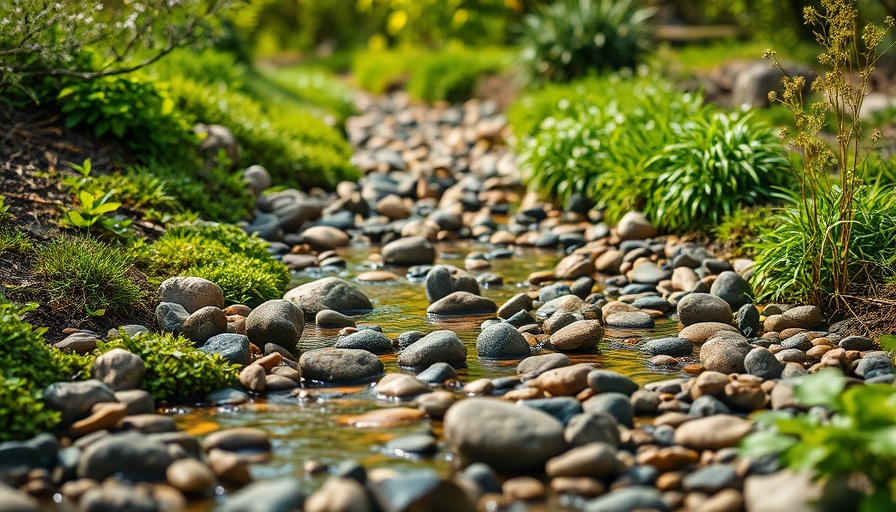
Transform Your Landscape: Design a Dry River Bed
When faced with a drainage dilemma, many homeowners find themselves searching for creative and effective solutions. One such solution is the stunning dry river bed. This ornamental feature not only addresses drainage concerns but can also add a beautiful, natural element to your garden. Imagine turning that muddy patch in your yard into a vibrant showcase that invites neighbors to stop and stare!
Understanding the Value of a Dry River Bed
What is a dry river bed? At its core, it’s a landscaping technique that uses river stones to create a channel through which excess water can flow away from your home. This design offers multiple benefits: it improves drainage, prevents soil erosion, and enhances the aesthetic appeal of your garden with a touch of natural scenery.
Before I embarked on my own dry river bed project, I struggled with my front yard — a muddy expanse that was frequently puddled and uninviting. However, after redirecting water away from the house and allowing it to filter through the soil via my dry river bed, my garden transformed into a flourishing haven. I've even observed how the melange of vegetation adapts to seasonal changes, making my garden a living artwork!
Choosing the Perfect Location for Your Feature
When laying out your dry river bed, start by assessing where the water tends to pool after the rains. This design element thrives best in lower areas where drainage woes are pronounced. For my project, I decided to install my dry river bed along the natural contours of the land. This not only facilitates water drainage but also respects the existing landscape's flow. A natural slope will help the channel function efficiently, allowing heavy rains to drain steadily.
The Art of Building a Dry River Bed
Building your dry river bed entails careful planning and execution. Select river stones that complement your landscape — here, I went with a classic rounded stone that emulates the elegance of a natural stream. It's crucial to incorporate rocks of varying sizes to create a more authentic riverbed look. Make sure to dig a shallow trench about 6 to 12 inches deep, then layer sand or gravel at the bottom before positioning your stones. This setup allows water to filter effectively.
Landscape Maintenance: Keeping Your River Bed Stunning
Once you’ve established your dry river bed, ongoing maintenance becomes crucial for its longevity and functionality. Regularly check for debris accumulation and ensure that the stones remain intact. Adding plants around the river bed can enhance drainage and fill the voids, creating a soothing transition between the beds and the surrounding landscape.
Gardening Tips for a Drought-Resistant Garden
Your dry river bed can serve as the cornerstone of a drought-resistant garden. By using native plants that thrive in your climate, and grouping them near the river bed, you improve water retention while minimizing maintenance. Consider planting California poppies or other drought-resistant species that flourish with minimal irrigation. These plants can create a colorful contrast, while their deep roots help to stabilize the soil.
Creating a Multi-Purpose Garden Design
Furthermore, your dry riverbed doesn’t merely act as a drainage solution — it can also enhance garden decor and promote biodiversity. Implementing features like decorative rocks, water features, and garden pathways can turn your outdoor space into a stunning tableau. This added layering not only makes the garden visually appealing but also invites pollinators, contributing to a healthy ecosystem.
Final Thoughts: Your Garden Awaits Reinvention
Implementing a dry river bed in your garden space not only addresses drainage problems but also enhances visual appeal and sustainability. As I reveled in my transformation, I enjoyed a beautiful wildflower lawn that flourished with minimal irrigation and maintenance. It's a joyous reminder that with creativity and careful planning, you can turn even the muddiest dilemmas into gorgeous gardens.
So, if you’re pondering how to tackle drainage issues in your garden, consider the possibility of a dry river bed. It’s an easy DIY gardening project that brings both function and flair to your outdoor lifestyle!
 Add Row
Add Row  Add
Add 




Write A Comment